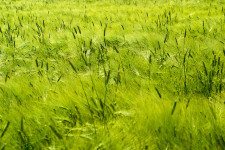Fungicides on Cereals Soar in Poland-Matthew Phillips

The past five years of crop protection growth have been driven significantly by BRIC countries, but don’t count out another rising star: Poland. Matthew Phillips of Phillips McDougall took a look at the country’s impressive progress in the consultancy’s December AgriFutura report.
Between 2000 and 2011, the Polish crop protection market surged more than 44% to be valued at $526.3 million, an average increase of 3.4% per year, according to Phillips McDougall. The major factors driving growth are an increase in area treated and a shift to more advanced products, the report said.
Cereals accounted for 50.2% of the market in 2011, followed by oilseed rape with 14.6% and maize with 6.6%. The largest single market sector is cereal herbicides, followed by cereal fungicides, then rapeseed and maize herbicides.
Although Poland’s planted area of cereals has declined in the last decade, the area treated with herbicides has increased 4% since 2000 and 8.4% over the last five years.
“The increase in fungicide treatment [on cereals] has been even more impressive, growing by 13.9% per year since 2000 and 22.9% in the last five years,” Phillips noted.
On the other hand, the area planted with maize and oilseed rape has increased over these periods. According to Phillips, growth in the herbicide-treated area has climbed at a rate ahead of that for planted area but has fallen behind in the past five years.
Phillips added that the Polish cereal herbicide market has moved away from the high-application rate phenoxy herbicide MCPA, to the lower application rate sulfonylureas since 2000. “A similar shift has occurred in the cereal fungicide sector, with the high application rate carbendazim being replaced with lower application rate triazoles,such as tebuconazole,” he said. However, azoxystrobin has a similar rate of application to carbendazim and is gaining market share.
The average fungicide application rate on cereals in Poland over the last decade for carbendazim was 133 grams/hectare; for tebuconazole, 73 g/ha; and azoxystrobin, 133 g/ha.





